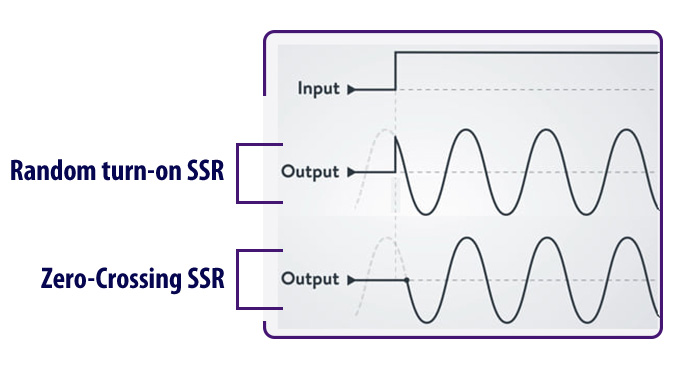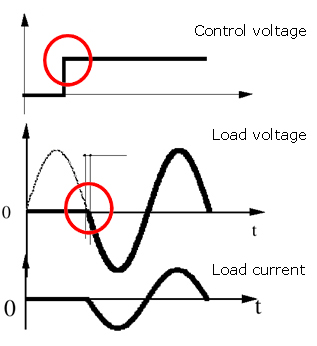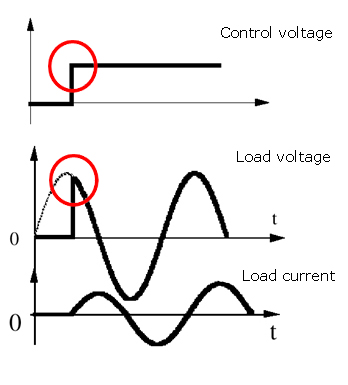Blog - EXPERTISE & INNOVATIONS - Solid State Relays - Zero-cross or random relay : what are the differences ?
Both zero-cross and random solid state relays are used for industrial applications. What are the differences between these two types of switching? Here are some answers.

In the case of a ZERO VOLTAGE CONTROL (OR ZERO-CROSS RELAY), power switching takes place only at the beginning of the alternation after the control has been applied. In fact, switching the power component is only permitted in the area around the zero crossing.
In the case of resistive or capacitive loads, it is preferable to use zero-cross relays which in this way limit the di/dt, disturbances on the network and increase the lifetime of the load and the relay.

Switching only at zero crossings will minimize or eliminate line and radiated noise resulting from initiating or terminating the AC output waveform in mid-cycle. However, designers need to be aware that zero-crossing SSRs may not be able to turn off with highly inductive loads. To account for this, celduc relais offers random-switching SSRs that turn on/off at the instant called for by the input transition. Again, the designer must understand the load and choose the appropriate SSR from celduc’s catalog.
In the case of an INSTANTANEOUS CONTROL (OR RANDOM RELAY), power switching takes place as soon as the control voltage has been applied (turn on time less than 100μs).
This type of control is more suited to all high inductive loads because of the phase difference between current and voltage. It is also suited to systems requiring an immediate switching.

celduc relais offers both zero-cross and random solid state relays.
SO8, SA8, SMT8, …. : Zero-Cross SSRs for all loads / heavy duty loads
SO9, SA9, SMT9, … : Zero-Cross SSRs for standard industrial loads / Resistive Loads aC-51
SO7, SA7, SGT7, … : Random SSRs